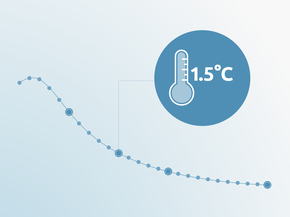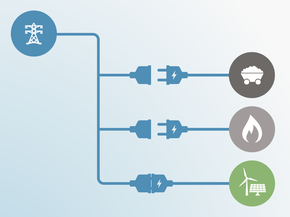Critically Insufficient4°C+
World
NDCs with this rating fall well outside of a country’s “fair share” range and are not at all consistent with holding warming to below 2°C let alone with the Paris Agreement’s stronger 1.5°C limit. If all government NDCs were in this range, warming would exceed 4°C.
Highly insufficient< 4°C
World
NDCs with this rating fall outside of a country’s “fair share” range and are not at all consistent with holding warming to below 2°C let alone with the Paris Agreement’s stronger 1.5°C limit. If all government NDCs were in this range, warming would reach between 3°C and 4°C.
Insufficient< 3°C
World
NDCs with this rating are in the least stringent part of a country’s “fair share” range and not consistent with holding warming below 2°C let alone with the Paris Agreement’s stronger 1.5°C limit. If all government NDCs were in this range, warming would reach over 2°C and up to 3°C.
2°C Compatible< 2°C
World
NDCs with this rating are consistent with the 2009 Copenhagen 2°C goal and therefore fall within a country’s “fair share” range, but are not fully consistent with the Paris Agreement long term temperature goal. If all government NDCs were in this range, warming could be held below, but not well below, 2°C and still be too high to be consistent with the Paris Agreement 1.5°C limit.
1.5°C Paris Agreement Compatible< 1.5°C
World
This rating indicates that a government’s NDCs in the most stringent part of its “fair share” range: it is consistent with the Paris Agreement’s 1.5°C limit.
Role model<< 1.5°C
World
This rating indicates that a government’s NDC is more ambitious than what is considered a “fair” contribution: it is more than consistent with the Paris Agreement’s 1.5°C limit.
Sources
List of references
- APERC. (2015). ENERGY DEMAND AND SUPPLY OUTLOOK 6th Edition. Volume II-SIngapore. Retrieved from http://aperc.ieej.or.jp/
- Energy Market Authority. (2017). Singapore Energy Statistics 2016. Retrieved from https://www.ema.gov.sg/cmsmedia/Publications_and_Statistics/Publications/SES/2016/Singapore Energy Statistics 2016.pdf
- IEA. (2014). World Energy Statistics and Balances 2014. Paris, France: International Energy Agency.
- International Renewable Energy Agency. (2016). Renewable Energy Outlook For ASEAN. Retrieved from http://www.irena.org/DocumentDownloads/Publications/IRENA_REmap_ASEAN_2016_report.pdf - page=93
- Ministry of the Environment and Water Resources. (2016). Climate Action Plan. A Climate-resilient Singapore for a sustainable future. Epidemiology.
- National Climate Change Secretariat. (2012). National Climate Change Strategy 2012. Challenges. Opportunities. Partnerships. Retrieved from papers2://publication/uuid/1DCC6A06-6AD9-4EAB-9A3D-BBDD9A056CA7
- National Environment Agency. (2014). SINGAPORE ’ S THIRD NATIONAL COMMUNICATION.
- Singapore’s Government. (2015). Singapore´s Intended Determined Contribution (INDC).
- Singapore’s Government. (n.d.). Singapore Leading the Way for Green Buildings in the Tropics. Retrieved from https://www.bca.gov.sg/greenmark/others/sg_green_buildings_tropics.pdf
- Singapore’s Government. (2017). Singapore Budget 2017, Budget Speech. Retrieved August 15, 2017, from http://www.singaporebudget.gov.sg/budget_2017/budgetspeech/pc.aspx - s2
- UNFCCC. (2015). Adoption of the Paris Agreement. Proposal by the President. Draft decision -/CP.21. Conference of the Parties. Twentyfirst session, Paris, 30 November to 11 December 2015. FCCC/CP/2015/L.9. United Nations Framework Convention on Climate Change.
- US EPA. (2012). Global Anthropogenic Non-CO2 Greenhouse Gas Emissions: 1990 - 2030. Retrieved from http://www.epa.gov/climatechange/Downloads/EPAactivities/EPA_Global_NonCO2_Projections_Dec2012.pdf
Further analysis
Latest publications
Stay informed
Subscribe to our newsletter






